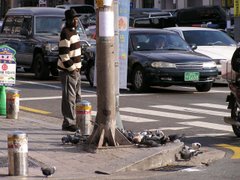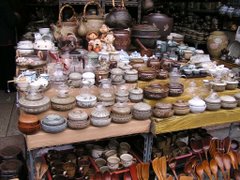When the new secretary of the Department of Education sat on his position, Sec. Armin Luistro received the first assignment from the new president of the country, Pres. Noynoy Aquino, and that is, to increase the number of classrooms in the country for the next two years (http://www.malaya.com.ph/07122010/metro5.html ). Increasing the number of classrooms did not sound to be a direct education problem. It is more of infrastructure issue. But classrooms seem to be a glaring issue for a poverty-stricken country giving high premium to education. What is the role of the classroom (aside from the fact it serves as an evacuation center when there is a calamity or disaster).
While I follow some academics in their cry for stronger and empowered social learning and with our college dean emphasizing the need "to develop a culture of innovation in the College in relation to these new tools (Teaching 2.0)", a huge portion of the archipelago and the leaders of the country lobby for better classrooms. Do we really need a classroom? What for? And would classroom really provide conducive environment for learning to take place? Will the desire to learn remain unaffected even if our Filipino students do not have complete books, some do not have shoes to wear, some do not have food to keep their attention? These are fundamental realities our local situation has to deal with.
The classroom in my opinion, has still the primary role of being a second home. This is the second home of the primary students. This is the second home of the high school students. The classroom is the second home where young minds get their inspiration and drive to learn, striving to study even with absence of the mind-nurturing supplements. The classroom is where the young students find their identities, where they start to discover who they are or what they want to become.
But how will these things happen? This is where the big role of the Filipino teacher comes in. The Pinoy teacher gives hope and motivation on how learning will help our lives. The Pinoy teacher strikes the balance of family and friends, the hard and soft skills to equip the students in their quest for knowledge. The Pinoy teacher is also strong on correcting misbehaviors with the hope she is molding good citizens of the country. She is making the classroom a true second home for the young minds. And because of this, we need inspirational, high-moral teachers as much as we need classrooms.
Subscribe to:
Post Comments (Atom)








No comments:
Post a Comment